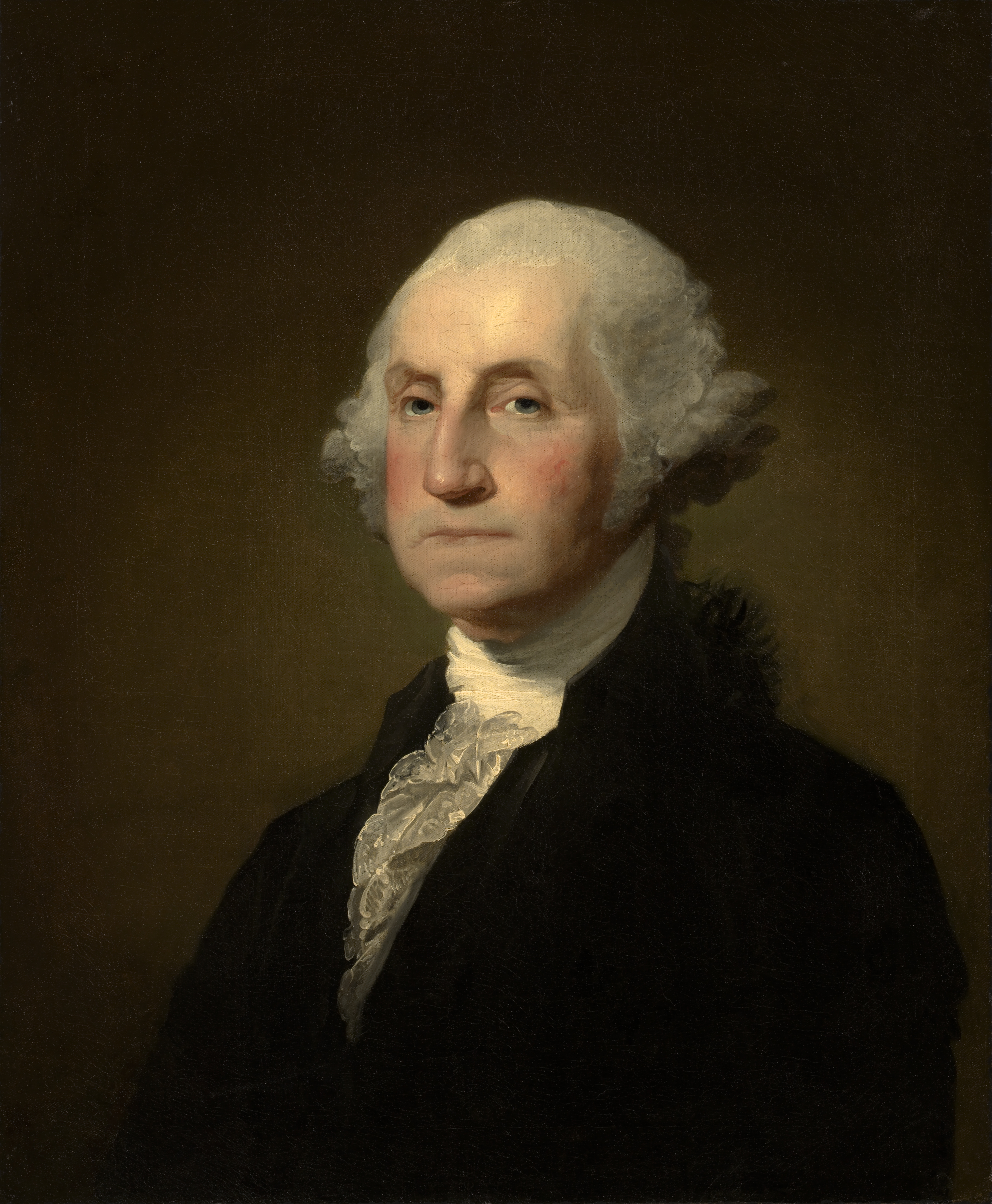
Presidency of George Washington
The presidency of George Washington began on April 30, 1789, when Washington was inaugurated as the first president of the United States, and ended on March 4, 1797. Washington took office after the 1788–1789 presidential election, the nation's first quadrennial presidential election, in which he was elected unanimously by the Electoral College. Washington was re-elected unanimously in the 1792 presidential election and chose to retire after two terms. He was succeeded by his vice president, John Adams of the Federalist Party.
Washington, who had established his preeminence among the new nation's Founding Fathers through his service as Commander-in-Chief of the Continental Army during the American Revolutionary War and as president of the 1787 constitutional convention, was widely expected to become the first president of the United States under the new Constitution, though he desired to retire from public life. In his first inaugural address, Washington expressed both his reluctance to accept the presidency and his inexperience with the duties of civil administration, though he proved an able leader.
He presided over the establishment of the new federal government, appointing all of the high-ranking officials in the executive and judicial branches, shaping numerous political practices, and establishing the site of the permanent capital of the United States. He supported Alexander Hamilton's economic policies whereby the federal government assumed the debts of the state governments and established the First Bank of the United States, the United States Mint, and the United States Customs Service. Congress passed the Tariff of 1789, the Tariff of 1790, and an excise tax on whiskey to fund the government and, in the case of the tariffs, address the trade imbalance with Britain. Washington personally led federalized soldiers in suppressing the Whiskey Rebellion, which arose in opposition to the administration's taxation policies. He directed the Northwest Indian War, which saw the United States establish control over Native American tribes in the Northwest Territory. In foreign affairs, he assured domestic tranquility and maintained peace with the European powers despite the raging French Revolutionary Wars by issuing the 1793 Proclamation of Neutrality. He also secured two important bilateral treaties, the 1794 Jay Treaty with Great Britain and the 1795 Treaty of San Lorenzo with Spain, both of which fostered trade and helped secure control of the American frontier. To protect American shipping from Barbary pirates and other threats, he re-established the United States Navy with the Naval Act of 1794.
Greatly concerned about the growing partisanship within the government and the detrimental impact political parties could have on the fragile unity of the nation, Washington struggled throughout his eight-year presidency to hold rival factions together. He was, and remains, the only U.S. president never to be formally affiliated with a political party.[1] Despite his efforts, debates over Hamilton's economic policy, the French Revolution, and the Jay Treaty deepened ideological divisions. Those who supported Hamilton formed the Federalist Party, while his opponents coalesced around Secretary of State Thomas Jefferson and formed the Democratic-Republican Party. While criticized for furthering the partisanship he sought to avoid by identifying himself with Hamilton, Washington is nonetheless considered by scholars and political historians as one of the greatest presidents in American history, usually ranking in the top three with Abraham Lincoln and Franklin D. Roosevelt.
Presidential residences and tours[edit]
Residences[edit]
Washington's wife Martha managed the presidential household in the federal capital, in addition to supervising affairs at Mount Vernon. Often referred to as "lady Washington" (the term "First Lady" did not come into common use until the mid-19th century[252]), she also organized weekly public salons, where she met with visiting dignitaries, members of Congress, and citizens from the local community. These receptions made Martha, as Abigail Adams wrote, "the object of Veneration and Respect."[253] Martha coordinated weekly levees for the president as well. Designed to give the public access to the president and to project a dignified public image of the presidency, these receptions also elicited criticism. Opposition newspapers derided them as monarchical and wasteful. Nonetheless, the gatherings became a fixture in the capital's social scene, and continued throughout Washington's presidency.[254]
Washington and his household lived in three executive mansions during his presidency:
States joining the Union[edit]
When the federal government began operations under the new form of government in the spring of 1789, two states—North Carolina and Rhode Island—were not yet members of the Union as neither had ratified the Constitution.[267][268] Both did so while Washington was in office, thereby joining the Union: North Carolina, November 21, 1789;[269][270] and Rhode Island, May 29, 1790.[270] While North Carolina joined of its own accord, Rhode Island only joined the Union after the federal government threatened to break off trade relations.[269][271]
Three new states were admitted to the Union (each on an equal footing with the existing states) while Washington was in office: Vermont, on March 4, 1791;[272][g] Kentucky, on June 1, 1792;[274][h] and Tennessee, on June 1, 1796.[275][i]